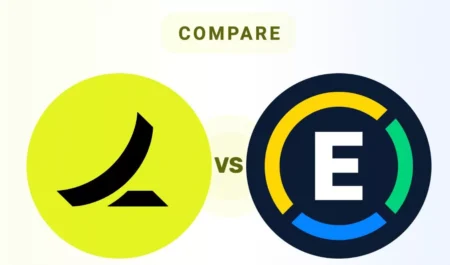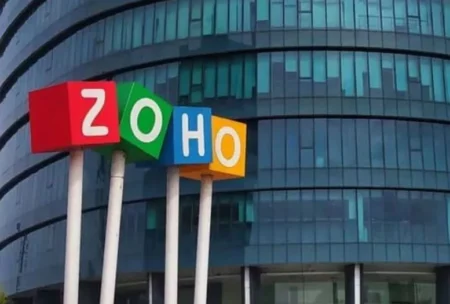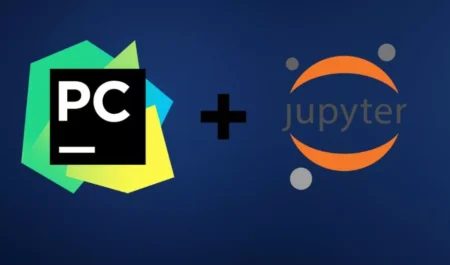3
How to Use PerfStack on PC: The PerfStack tool is easy to use and is made to make it easier to find and fix speed problems on your computer. PerfStack has a simple design and powerful features that can help you find and fix problems with how your computer is running, no matter if you’re a tech enthusiast or a professional in the field. With PerfStack, you can see in one place how much the CPU, memory, hard drive, and network are being used (both locally and globally).
That helps you a lot to figure out why your computer may be running slowly. No matter how many computers you’re managing, PerfStack gives you the information you need to make smart decisions and get the most out of each one. This guide will teach you how to Use PerfStack on PC on your computer, from the basics of gathering information to more advanced tools for figuring out what’s happening.
What is PerfStack
PerfStack is a feature of SolarWinds’ Orion platform that helps IT workers who are having trouble with network performance. Its main job is to make fixing and analysing these kinds of problems easier. Instead of going through different sources of data, PerfStack brings together performance measures from servers, applications, virtual machines, and network devices into a single view.
PerfStack also makes troubleshooting easier by giving you a central place to gather all of your info. This not only saves time but also makes it easier for IT experts to find and fix problems with networks. In the end, PerfStack is very important for improving network speed and making sure systems are reliable by helping people make smart decisions and quickly fix problems. If you want to know more information about this visit PerfStack Official Website.
How to Use PerfStack on PC
Accessing SolarWinds Dashboard
- Launch your preferred web browser on your PC.
- Enter the URL of your SolarWinds server to access the SolarWinds dashboard.
- Log in to your SolarWinds account using your credentials.
- Once logged in, navigate to the “Performance Analysis” section of the dashboard.
- Look for the “PerfStack” option, usually located in the main menu or under a specific category related to performance analysis.
- Click on the “PerfStack” option to enter the PerfStack interface.
Creating a New Project
- In the PerfStack interface, click on the “New Project” button to create a new project.
- Give your project a descriptive name that reflects the purpose or context of your analysis.
Adding Data Sources
- To add data sources to your project, click on the “Add Data” button.
- Choose the appropriate data sources from the list provided.
- These can include devices, applications, servers, or any other monitored entities in your environment.
- Select the specific metrics you want to monitor for each data source.
- You can choose from a wide range of performance metrics, such as CPU usage, memory utilization, network traffic, etc.
Correlating Data
- Drag and drop the selected metrics onto the PerfStack canvas.
- Arrange the metrics on the canvas to visually correlate them according to your analysis requirements.
- You can customize the layout, size, and appearance of each metric on the canvas to optimize visualization.
Analyzing Data
- Arrange the metrics on the canvas.
- Start analyzing the data.
- Look for correlations, patterns, anomalies, or trends among the different metrics.
- Use the interactive features of PerfStack, such as zooming, filtering, and grouping, to drill down into specific timeframes or subsets of data for deeper analysis.
Saving and Sharing Projects
- Complete your analysis.
- Save your PerfStack project for future reference or sharing.
- Click on the “Save” button.
- Provide a name and optional description for your project.
- Share your PerfStack project with colleagues by providing them with the project name or exporting it in a compatible format.
Reviewing and Iterating
- Periodically review your PerfStack projects to monitor ongoing performance trends or investigate new issues.
- Make adjustments to your projects as needed, such as adding or removing data sources, modifying metrics, or refining correlations based on changing requirements or priorities.
Benefits of PerfStack for PC Users
- Performance Monitoring: PC users can see how fast their computers are running in real time with PerfStack. PerfStack gives you information about your system’s health and performance problems by gathering and showing data from many sources, like CPU usage, memory usage, disc I/O, network traffic, and application performance.
- Custom Dashboards: PC users can make dashboards that are unique to their tracking needs with PerfStack. They can pick which performance measures to show, how to arrange them, and bring together data from various sources into a single view for full monitoring.
- Troubleshooting: PerfStack makes troubleshooting easier by putting together performance info from different parts of the PC. Users can put data from various sources on top of one graph, which makes it easier to find connections and get to the bottom of performance problems.
- Historical Analysis: PC users can see how performance has changed over time by using PerfStack to look at performance data from the past. Users can find patterns, predict problems, and make smart choices about how to improve the system and use its resources by comparing current performance numbers with data from the past.
- Collaboration: PerfStack lets PC users and IT teams work together by letting them share custom panels and performance views. This encourages sharing of information, improves troubleshooting, and makes it easier for people to work together to solve performance problems.
- Integration: PerfStack works well with other SolarWinds products and monitoring tools. It gives PC users a complete way to keep an eye on speed from start to finish. Integration with the Orion Platform also lets you manage and keep an eye on various PCs across the network from one place.
- Scalability: PerfStack is scalable, which means it can meet the monitoring needs of PC users in a wide range of settings, from small businesses to big corporations. PerfStack is flexible and scalable enough to adapt to changing tracking needs, whether you’re keeping an eye on a single PC or a whole fleet of devices.
Conclusion
To sum up, PerfStack for PC is a useful programme that tells users how well their computer is running. It’s easier to find issues, fix them, and make things better. PerfStack makes it easy to understand how different types of information are connected, which can help users see how different things that might affect performance might be linked.
They can easily focus on the things that are most important to them. It’s also made to work with a lot of different types of data, so anyone can use it, no matter what kind of computer they have or how they use it. Users can make their work more efficient, cut down on the time their system is down, and make sure it’s always running at its best by using PerfStack to its fullest.
Question and Answer
Where can I find more resources and support for using PerfStack?
Visit SolarWinds’ website if you need help with PerfStack. Books, guides, and an information base can be found there. Another great way to meet people and learn together is to join the community boards.
Is there a limit to the number of data sources I can add to a PerfStack project?
Your SolarWinds licence and Orion server’s ability will determine how many data sources you can add to a PerfStack project. To get a full picture of speed, PerfStack can handle large datasets.
Can I share PerfStack projects with others?
Of course! When you use PerfStack with SolarWinds, it’s easy to share work. Make a URL for the project or add it to a report, and then share it with coworkers or other important people so that you can all work together to analyse it.
You Might Be Interested In










Leave a Reply